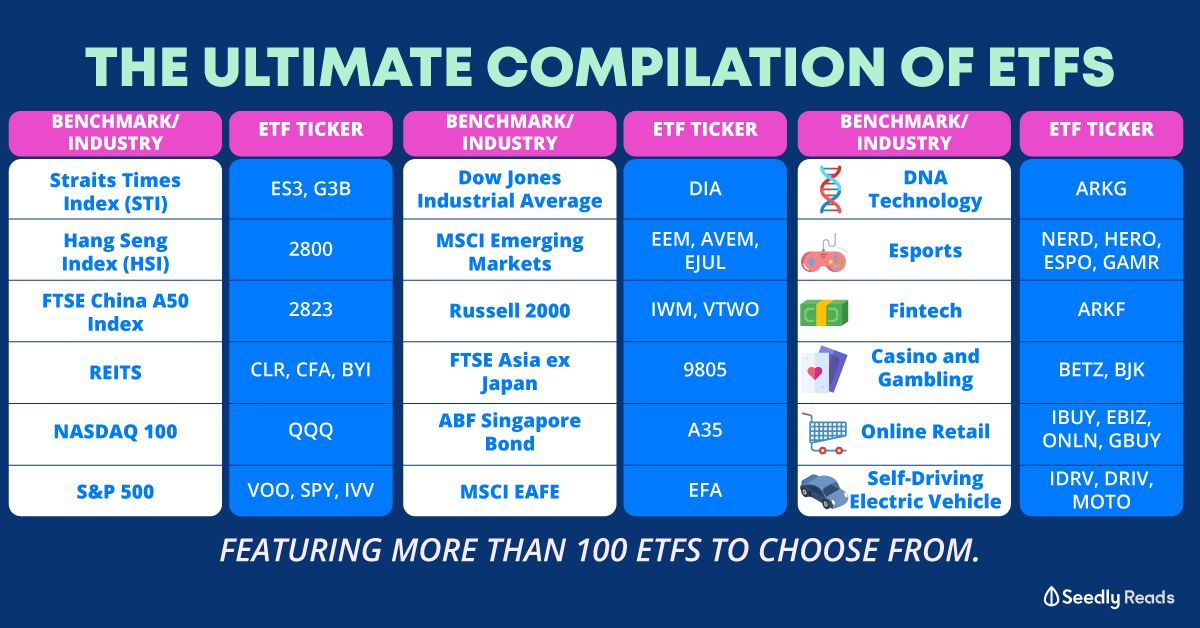Hello!

TL;DR
Taking up a position in a foreign ETF that is not in your base currency will subject you to foreign exchange risk.
Exchange rate fluctuations have the potential to erode your returns from the ETF.
Therefore, it is best to manage your foreign exchange risk exposure that aligns with your long-term investment goals.
What are Exchange Traded Funds (ETFs)?

I’m sure many of us know what ETFs are so I’m not going to go into the details.
In the broad spectrum of investing, ETFs is considered a “passive” approach to investing in an equity portfolio for long-term investment. However, it is not exactly passive as you would still have to monitor the index the ETF is tracking from time to time to see if it is performing.
Why is there Exchange Rate Fluctuation?
In the short-run, currency volatility is due to news like economic data release or political events which are unpredictable.
In the long-run, forces of demand and supply of the currencies determine their price in the foreign exchange market. This depends on investors’ confidence in the assets of that country and forex traders’ confidence in the country’s currency.
The central bank’s monetary policy will also have an effect on the national currency. For Singapore, we adopt an exchange-rate-centered monetary policy due to the small and open nature of our economy & our dependence on trade.
What is Currency Risk/Foreign Exchange Risk?

Source: MBA Mondays
If you have been reading various ETF prospectuses, you would have came across these words: ‘currency risk’ and ‘foreign exchange risk’.
With all foreign investments, there is bound to be currency risk. Currency risk is the impact of exchange rate movements on your foreign investments.
For the scenarios below, I am going to assume that your base currency is SGD.
If you would like to buy the SPDR S&P 500 ETF (NYSE Arca:SPY), you will be subjected to currency risk as the ETF is invested in instruments denominated in USD. If the USD appreciates against the SGD (or SGD depreciates against the USD), you will gain. On the contrary, if the USD depreciates against the SGD (or SGD appreciates against the USD), you will lose money.
You may think that these exchange rate fluctuations do not affect your foreign investments significantly, but think again! If the US ETF fell 5% while the USD depreciated by 5% against the SGD, then you would see a total loss of 10%.
Your Returns in SGD (Home Currency) = Change in Price of Security in USD (Foreign Currency) + Exchange Rate Change from USD to SGD (Foreign Currency to Home Currency)
However, if you are buying the SPDR Straits Times Index ETF (SGX:ES3), you will not be subjected to currency risk as the ETF is invested in instruments denominated in SGD.
Foreign exchange rates can be very volatile, change quickly and unpredictably, so please take this into account when making an investment!
Difference in Currency Risk Exposure
Your vulnerability to exchange rate volatility depends on the time horizon you hold the ETFs. With a shorter time horizon, you are at a higher currency risk as you are unable to ride the rough patches out. With a longer time horizon, there is lower currency risk and you may even benefit from it.
Managing Currency Risk Exposure
If you are worried about your currency risk exposure, fret not! Here are various methods to manage it:
- Longer Investment Time Horizon: By staying invested for the long-term, you are able to ride out short-term market fluctuations and gain value.
- Avoid Foreign ETFs: By investing in ETFs with your own base currency, you avoid foreign exchange exposure all together. However, the downside is that you will be less diversified.
- Buying Currency-Hedged ETFs: Currency-hedged ETFs use financial contracts to offset the impacts of exchange rates on returns. This cancels out any losses from a depreciating foreign currency and wins from an appreciating foreign currency, so you get the same returns as a local investor. I guess we can’t always have the best of both worlds!
- Diversify Your Portfolio
Hope this helps!







Hello!
TL;DR
Taking up a position in a foreign ETF that is not in your base currency will subject you to foreign exchange risk.
Exchange rate fluctuations have the potential to erode your returns from the ETF.
Therefore, it is best to manage your foreign exchange risk exposure that aligns with your long-term investment goals.
What are Exchange Traded Funds (ETFs)?
I’m sure many of us know what ETFs are so I’m not going to go into the details.
In the broad spectrum of investing, ETFs is considered a “passive” approach to investing in an equity portfolio for long-term investment. However, it is not exactly passive as you would still have to monitor the index the ETF is tracking from time to time to see if it is performing.
Why is there Exchange Rate Fluctuation?
In the short-run, currency volatility is due to news like economic data release or political events which are unpredictable.
In the long-run, forces of demand and supply of the currencies determine their price in the foreign exchange market. This depends on investors’ confidence in the assets of that country and forex traders’ confidence in the country’s currency.
The central bank’s monetary policy will also have an effect on the national currency. For Singapore, we adopt an exchange-rate-centered monetary policy due to the small and open nature of our economy & our dependence on trade.
What is Currency Risk/Foreign Exchange Risk?
Source: MBA Mondays
If you have been reading various ETF prospectuses, you would have came across these words: ‘currency risk’ and ‘foreign exchange risk’.
With all foreign investments, there is bound to be currency risk. Currency risk is the impact of exchange rate movements on your foreign investments.
For the scenarios below, I am going to assume that your base currency is SGD.
If you would like to buy the SPDR S&P 500 ETF (NYSE Arca:SPY), you will be subjected to currency risk as the ETF is invested in instruments denominated in USD. If the USD appreciates against the SGD (or SGD depreciates against the USD), you will gain. On the contrary, if the USD depreciates against the SGD (or SGD appreciates against the USD), you will lose money.
You may think that these exchange rate fluctuations do not affect your foreign investments significantly, but think again! If the US ETF fell 5% while the USD depreciated by 5% against the SGD, then you would see a total loss of 10%.
Your Returns in SGD (Home Currency) = Change in Price of Security in USD (Foreign Currency) + Exchange Rate Change from USD to SGD (Foreign Currency to Home Currency)
However, if you are buying the SPDR Straits Times Index ETF (SGX:ES3), you will not be subjected to currency risk as the ETF is invested in instruments denominated in SGD.
Foreign exchange rates can be very volatile, change quickly and unpredictably, so please take this into account when making an investment!
Difference in Currency Risk Exposure
Your vulnerability to exchange rate volatility depends on the time horizon you hold the ETFs. With a shorter time horizon, you are at a higher currency risk as you are unable to ride the rough patches out. With a longer time horizon, there is lower currency risk and you may even benefit from it.
Managing Currency Risk Exposure
If you are worried about your currency risk exposure, fret not! Here are various methods to manage it:
Hope this helps!